Get to know you activities are engaging exercises designed to help students feel comfortable and build connections. These activities ease first-day jitters‚ fostering friendships and collaboration.
1.1 Overview of Icebreaker Activities
Icebreaker activities are interactive exercises designed to help students and educators feel at ease in new settings. These engaging exercises encourage sharing‚ collaboration‚ and laughter‚ breaking initial hesitation. From quick games like “The Name Game” to creative challenges such as “Two Truths and a Lie‚” icebreakers provide a platform for participants to connect. They often involve simple tasks that reveal personal preferences or fun facts‚ fostering a sense of belonging. These activities are particularly effective during the first days of class‚ setting a positive tone for the academic journey ahead while making learning environments feel welcoming and inclusive.
1.2 Importance of Initial Interactions in Classrooms
Initial interactions in classrooms play a crucial role in establishing a positive learning environment. Positive first encounters help students feel secure and valued‚ fostering open communication and collaboration. Strong early connections between students and educators create a supportive atmosphere‚ encouraging active participation and reducing anxiety. Meaningful interactions also allow teachers to understand student dynamics‚ enabling tailored instruction and better classroom management. These early exchanges set the foundation for a productive and inclusive academic experience‚ highlighting the importance of intentional efforts to build rapport from day one.
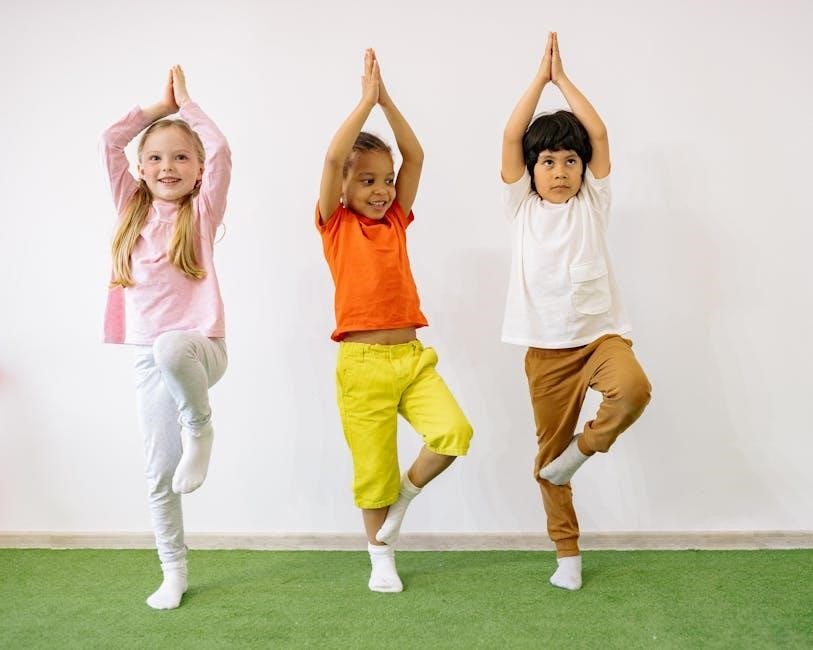
Importance of Icebreaker Activities
Icebreaker activities are essential for reducing anxiety and fostering a welcoming environment‚ encouraging student participation and helping them feel comfortable sharing and connecting with peers.
2.1 Reducing First-Day Anxiety
Icebreaker activities play a crucial role in reducing first-day anxiety for students. These engaging exercises create a relaxed atmosphere‚ helping students feel more comfortable in a new environment. Fun and interactive games like “I’ve Got Mail” or “Two Truths and a Lie” encourage students to interact without pressure. By sharing simple facts or interests‚ students begin to build connections and feel less nervous. This initial comfort helps them transition smoothly into the learning process‚ fostering a sense of belonging and confidence from the very start of the academic journey.
2.2 Building a Comfortable Learning Environment
Icebreaker activities are essential for creating a comfortable learning environment. By encouraging students to share and interact‚ these exercises help break down social barriers. Activities like “I’ve Got Mail” and “Two Truths and a Lie” allow students to express themselves in a relaxed setting‚ fostering a sense of community. This shared experience helps students feel valued and connected‚ making the classroom environment inclusive and positive. A comfortable learning space not only enhances student engagement but also supports their social and academic growth throughout the year;
2.3 Encouraging Student Participation
Icebreaker activities play a crucial role in encouraging student participation by creating a relaxed atmosphere. Games like “Two Truths and a Lie” and “I’ve Got Mail” involve sharing personal interests or fun facts‚ making students feel comfortable contributing. These exercises break down shyness and hesitation‚ allowing even quieter students to engage. When students are actively involved from the start‚ they are more likely to participate in discussions and group work throughout the course. This early engagement fosters a sense of belonging and sets the tone for a collaborative learning environment.
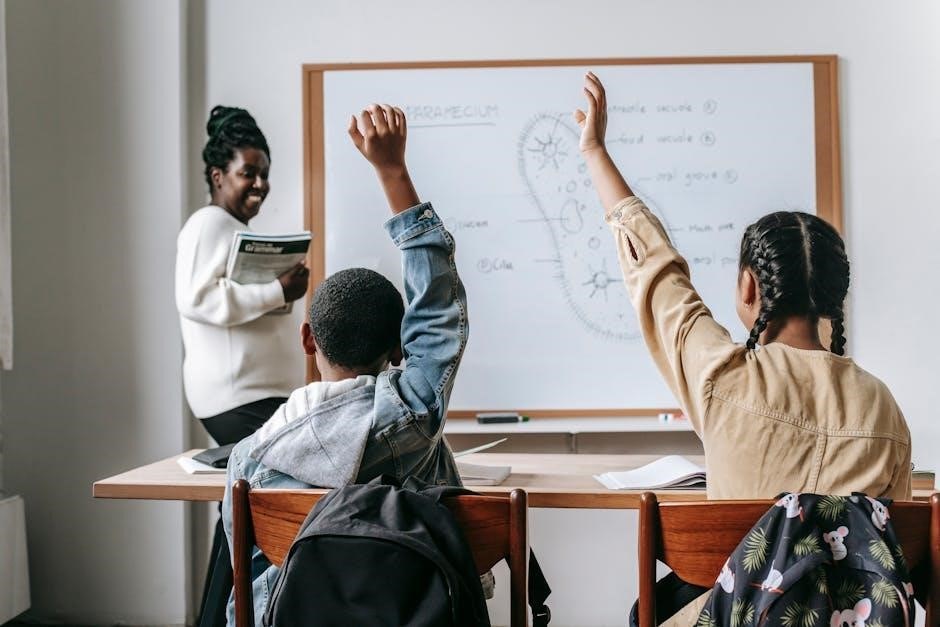
Types of Get to Know You Activities
Activities include icebreaker games‚ sharing-based exercises‚ physical movements‚ group challenges‚ and question-based discussions. These diverse approaches cater to different learning styles‚ ensuring everyone feels included and engaged.
3.1 Icebreaker Games
Icebreaker games are interactive and fun activities designed to help students overcome initial shyness. Examples include “I’ve Got Mail‚” where students share statements about themselves‚ and “Two Truths and a Lie‚” fostering curiosity and laughter. These games encourage participation‚ breaking the ice and creating a relaxed atmosphere. They often involve movement or group work‚ making them engaging and memorable. Icebreaker games are perfect for the first days of class‚ helping students connect and feel comfortable with their peers. They set the tone for a collaborative and inclusive learning environment‚ making everyone feel valued and heard from the start.
3.2 Sharing-Based Activities
Sharing-based activities are designed to encourage students to open up and share personal experiences or thoughts. These activities often involve students answering questions or discussing topics like hobbies‚ interests‚ or goals. For example‚ students might share their favorite activities or things they dream of trying someday. These exercises help build connections and foster a sense of community. They allow students to learn about each other’s lives and interests‚ creating a foundation for meaningful relationships. Sharing-based activities are simple yet effective‚ making them ideal for helping students feel comfortable and engaged in the classroom environment from the very beginning.
3.3 Physical Activities
Physical activities are dynamic and engaging ways to help students get to know one another while moving and interacting. Examples include games like “Leap Frog” or “Ring Around the Rosy‚” which encourage teamwork and laughter. These activities break the ice by creating shared experiences and fostering collaboration. They are particularly effective for students who may feel more comfortable expressing themselves through movement rather than verbal communication. Physical activities not only promote physical health but also help students bond in a fun and energetic way‚ making them a great addition to any classroom or group setting.
3.4 Group Challenges
Group challenges are interactive activities that require collaboration and problem-solving. Examples include team-based games or puzzles that encourage students to work together. These activities help students bond by fostering teamwork and communication. Group challenges also promote mutual understanding and trust‚ as students rely on each other’s strengths. They provide opportunities for students to showcase their skills and personalities while achieving a common goal. These challenges are effective for breaking ice and creating a sense of unity‚ making them a valuable tool for teachers to build a cohesive classroom environment;
3.5 Question-Based Activities
Question-based activities involve asking and answering questions to encourage sharing and dialogue. Examples include “If you could meet any living person‚ who would it be?” or “What crazy activities do you dream of trying someday?” These questions help students open up and learn about each other’s interests and personalities. They are adaptable to different class sizes and can be conducted individually or in small groups. This format fosters connections‚ encourages participation‚ and creates a relaxed environment for students to express themselves‚ making it easier for them to build relationships and feel included in the classroom setting.
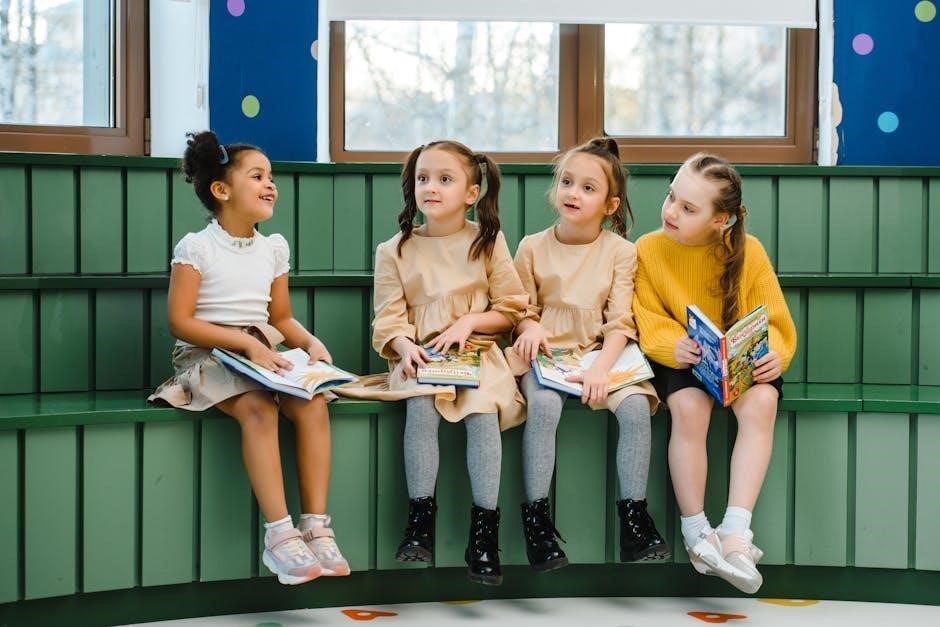
Popular Icebreaker Games
Popular icebreaker games like “The Name Game‚” “Two Truths and a Lie‚” and “I’ve Got Mail” help students interact and reduce first-day anxiety.
4.1 The Name Game
The Name Game is a classic icebreaker where students learn each other’s names through repetition and association. Each student introduces themselves‚ often paired with a unique fact or hobby‚ making it easier for others to remember names. This activity fosters familiarity and reduces awkwardness‚ creating a welcoming environment. It encourages active listening and participation‚ helping students feel more connected from the start. The game is simple yet effective‚ making it a popular choice for classrooms and group settings to kickstart relationships and collaboration.
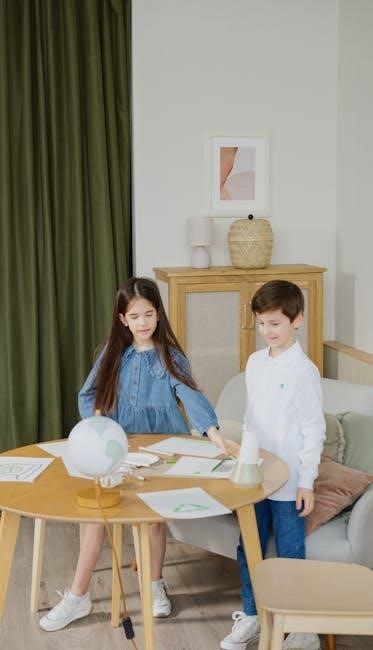
4.2 Two Truths and a Lie
Two Truths and a Lie is an engaging icebreaker where students share two true statements and one false statement about themselves. Peers then guess which one is the lie. This activity sparks curiosity‚ laughter‚ and conversation‚ helping students discover shared interests or surprising facts. It encourages active listening and critical thinking while breaking the ice in a fun‚ interactive way. The game is easy to implement and works well in both small and large groups‚ making it a versatile tool for fostering connections and camaraderie in the classroom.
4.3 I’ve Got Mail
I’ve Got Mail is a fun and interactive icebreaker where students write interesting statements about themselves on slips of paper. These are then shared anonymously‚ and peers guess who wrote each statement. This activity encourages students to share unique aspects of themselves‚ fostering curiosity and laughter. It helps create a positive classroom environment‚ making it easier for students to connect and learn about one another. The guessing element adds excitement‚ while the sharing promotes deeper understanding and camaraderie among participants.
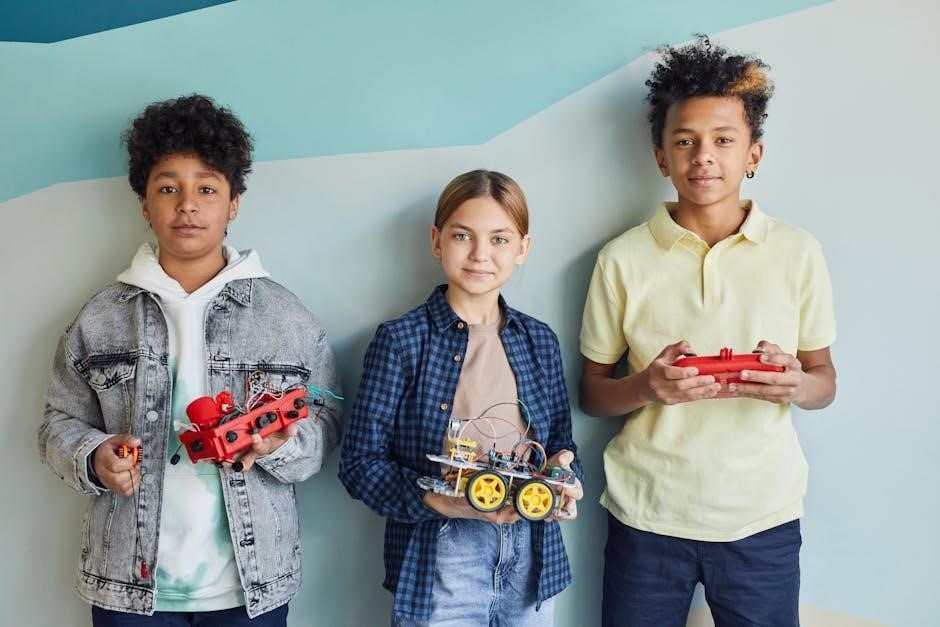
Benefits for Students
Get to know you activities help students build friendships‚ improve communication‚ and feel included‚ reducing first-day anxiety and fostering a comfortable classroom atmosphere‚ promoting engagement and mutual respect.
5.1 Fostering Friendships
Get to know you activities create opportunities for students to connect‚ fostering friendships through shared experiences and mutual interests. Games like The Name Game and Two Truths and a Lie encourage interaction‚ helping students bond over personal stories and laughter. These activities make it easier for students to approach one another‚ breaking down social barriers. Shared experiences during these exercises often lead to stronger‚ more meaningful relationships‚ creating a supportive classroom environment where everyone feels valued and connected. This sense of camaraderie helps students collaborate more effectively and builds a positive social atmosphere in the classroom.
5.2 Enhancing Communication Skills
Get to know you activities enhance communication skills by encouraging students to express themselves through interactive games and discussions. Activities like “I’ve Got Mail” and “Two Truths and a Lie” prompt students to share personal stories‚ fostering verbal and listening skills. These exercises help students articulate their thoughts clearly and confidently‚ breaking down hesitations. By engaging in such activities‚ students learn to convey their ideas effectively and respond thoughtfully to others‚ creating a dynamic where open communication flourishes in the classroom environment.
5.3 Promoting Inclusivity
Get to know you activities promote inclusivity by creating a welcoming environment where every student feels valued. These exercises encourage participation from all students‚ regardless of their background or personality. Activities like group challenges and sharing-based games help break down social barriers‚ allowing students to appreciate each other’s unique perspectives. By fostering mutual respect and understanding‚ these activities ensure that no student feels left out‚ creating a sense of belonging in the classroom. This inclusive atmosphere supports diversity and helps students connect on a deeper level‚ making the learning environment more harmonious and collaborative.
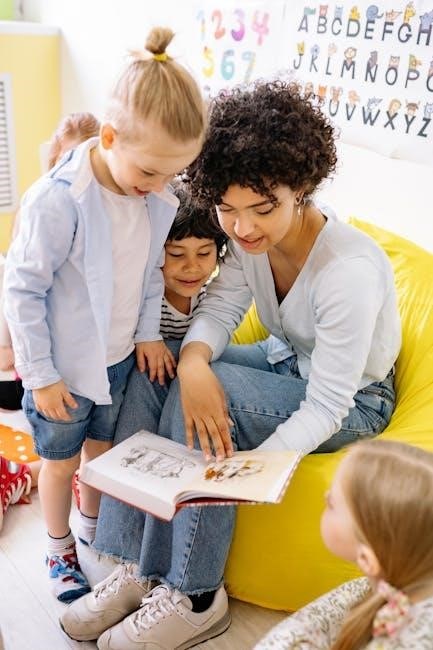
Benefits for Teachers
Get to know you activities benefit teachers by understanding student dynamics and facilitating classroom management. These exercises help teachers observe interactions‚ fostering a supportive and organized learning environment.
6.1 Understanding Student Dynamics
Get to know you activities provide teachers with insights into student dynamics‚ revealing personality traits‚ strengths‚ and challenges. By observing interactions‚ educators can identify natural leaders‚ reserved students‚ and potential friendships. These activities highlight how students communicate‚ collaborate‚ and respond to new situations‚ offering a clearer understanding of classroom relationships. This understanding enables teachers to tailor their approach‚ ensuring each student feels supported and valued. It also helps in addressing potential conflicts early‚ fostering a positive and inclusive learning environment that encourages growth and participation. These insights are invaluable for creating a harmonious and effective classroom atmosphere.
6.2 Facilitating Classroom Management
Get to know you activities play a crucial role in facilitating classroom management by fostering mutual respect and understanding among students. These exercises help teachers establish a positive atmosphere‚ enabling students to feel comfortable and engaged. By encouraging open communication and teamwork‚ activities like icebreakers and group challenges set the foundation for a well-managed classroom. They also allow teachers to identify potential behavioral patterns early‚ helping to address issues before they escalate. This proactive approach ensures a smoother transition into academic routines and promotes a structured‚ respectful learning environment that benefits everyone involved. Effective classroom management begins with these foundational activities.

How to Implement These Activities
Start by preparing engaging activities like surveys or games‚ ensuring all students participate. Follow up with debriefing questions to reinforce connections and reflections on the experience.
7.1 Preparing for the Activity
Preparing for get-to-know-you activities involves selecting the right exercises based on class size and age. Choose games or sharing-based tasks that align with student interests. Gather materials like cards‚ prompts‚ or props. Ensure activities are inclusive and tailored to the group’s preferences. Provide clear instructions and demonstrate examples to avoid confusion. Encourage creativity and respect during participation. Prepare debriefing questions to reflect on the experience. The goal is to create a relaxed environment where students feel comfortable interacting and sharing‚ fostering meaningful connections from the start.
7.2 Engaging All Students
Engaging all students requires creating a welcoming atmosphere where everyone feels included. Encourage participation by pairing quieter students with more outgoing peers. Use non-verbal activities for shy students‚ such as writing responses or drawing. Ensure activities accommodate different learning styles and abilities. Celebrate diverse perspectives and interests to foster inclusivity. Provide prompts or questions that allow students to share at their comfort level. Offer one-on-one interactions for those who prefer smaller settings. By addressing individual needs‚ teachers can ensure active involvement and create a connected classroom environment where every student feels valued.
7.3 Debriefing After Activities
Debriefing after activities is crucial for reflection and reinforcing connections. Encourage students to share their experiences‚ thoughts‚ and feelings about the activity. Ask open-ended questions like‚ “What was your favorite part?” or “What did you learn about your classmates?” This helps students process their interactions and deepen understanding. Highlight key takeaways and discuss how the activity fostered collaboration or inclusivity. Debriefing also allows teachers to address any concerns and celebrate successes‚ ensuring a positive and meaningful experience for all students. It sets the tone for a supportive and engaged classroom environment moving forward.
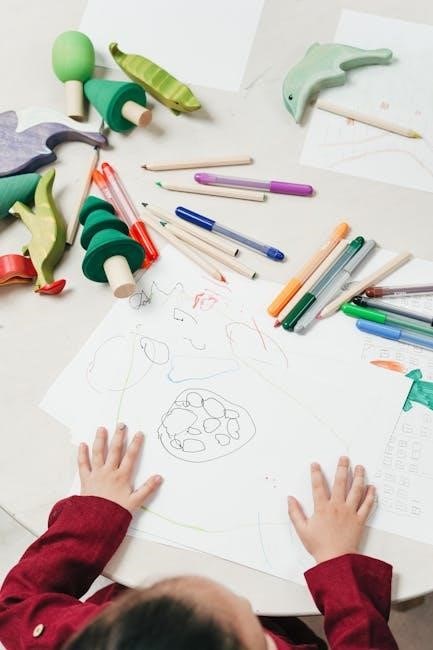
Tips for Effective Icebreakers
Effective icebreakers require careful planning and execution. Choose activities that align with your goals‚ encourage participation‚ and manage time efficiently to ensure a positive experience.
8.1 Choosing the Right Activity
Selecting the right icebreaker is crucial for success. Consider the age‚ size‚ and diversity of the group to ensure inclusivity. Activities like The Name Game or Two Truths and a Lie are excellent for fostering connections. They encourage participation and help students feel comfortable. Align the activity with your goals‚ whether it’s building friendships or enhancing communication. Always opt for something engaging and relevant to create a positive atmosphere. This thoughtful approach ensures the activity is enjoyable and effective for everyone involved.
8.2 Encouraging Participation
Encouraging participation in icebreakers is key to their success. Create a safe and inclusive environment where students feel comfortable sharing. Use activities like Two Truths and a Lie or group surveys to engage everyone. Positive reinforcement and enthusiasm from teachers can motivate hesitant students. Pairing students with peers or allowing voluntary sharing can also boost confidence. Encourage active listening and respect among participants to foster a supportive atmosphere. By making participation fun and non-threatening‚ you ensure all students feel valued and eager to contribute to the activity.
8.3 Managing Time Effectively
Managing time effectively is crucial for successful icebreaker activities. Set clear time limits for each task to ensure activities stay on track. Use timers or signals to keep students focused and avoid prolonging exercises. Prioritize activities that maximize engagement without overwhelming participants. Keep instructions concise and ensure smooth transitions between tasks. Balancing participation with efficiency ensures all students have a chance to contribute without feeling rushed. Effective time management helps maintain energy and enthusiasm‚ keeping the activity enjoyable and productive for everyone involved.
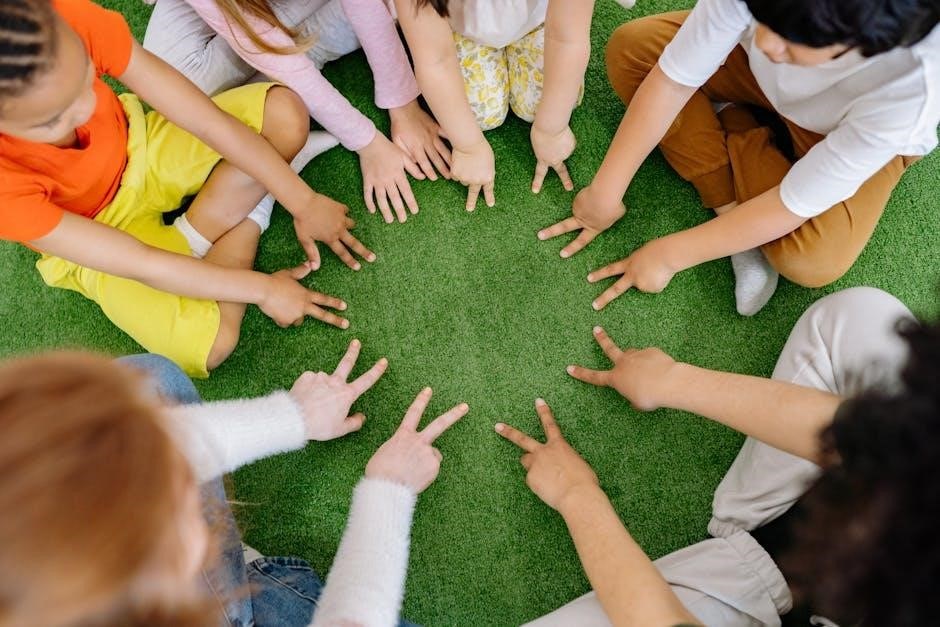
Downloading Get to Know You Activity PDFs
Accessing Get to Know You Activity PDFs is convenient‚ with free resources like “I’ve Got Mail” and “Theatre Icebreaker” available for download and customization.
9.1 Accessing Free Resources
Teachers can easily access free Get to Know You Activity PDFs online. These resources include games like “I’ve Got Mail” and “Theatre Icebreaker‚” designed for various age groups. Many websites offer downloadable packets with activities tailored for classrooms‚ such as name games‚ surveys‚ and group challenges. These PDFs are perfect for the first day of school or new sessions‚ helping students feel comfortable and engaged. They often include debriefing questions and tips for customization‚ making it easy to adapt activities to suit different class dynamics and learning goals.
9.2 Creating Custom PDFs
Teachers can create custom Get to Know You Activity PDFs tailored to their classroom needs. These PDFs can include personalized icebreakers‚ such as “If you could meet any living person for dinner” or “What crazy activities do you dream of trying someday?” Educators can design activities that align with their curriculum or student interests. Tools like Canva or Google Docs allow easy customization‚ ensuring the content is engaging and relevant. Adding debriefing questions and activity instructions makes the PDFs comprehensive and ready for use‚ helping students connect on a deeper level while fostering a positive classroom environment.
Get to know you activities are essential for creating a welcoming classroom environment‚ fostering friendships‚ and enhancing communication skills. By reducing first-day anxiety and encouraging participation‚ these exercises help students feel comfortable and connected. Teachers benefit by understanding student dynamics and managing classrooms effectively. With a variety of activities like icebreaker games and sharing-based exercises‚ educators can tailor approaches to suit different learning styles. Embracing these strategies ensures a positive start to the academic journey‚ promoting inclusivity and setting the stage for a collaborative and supportive learning experience throughout the year.
